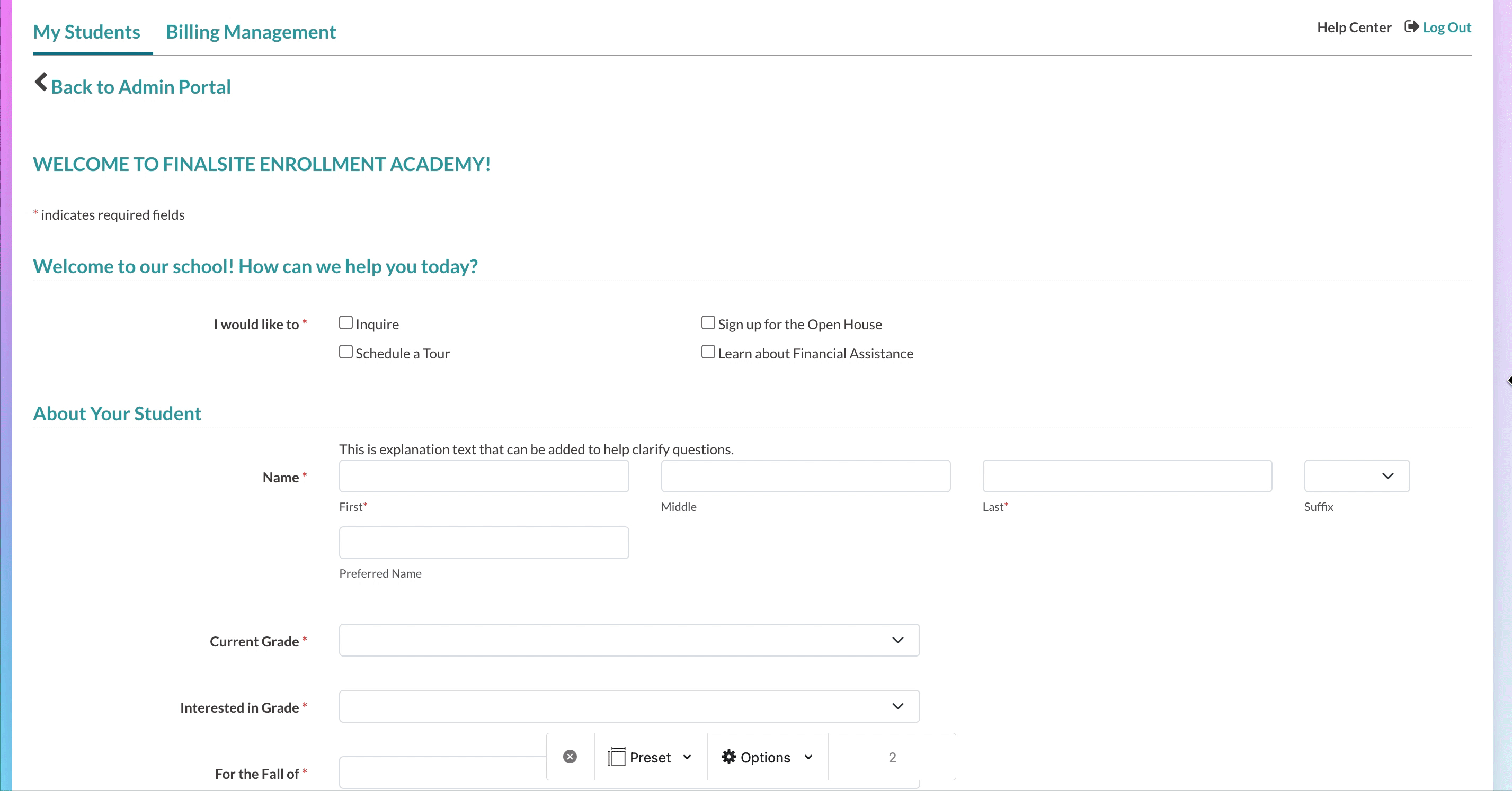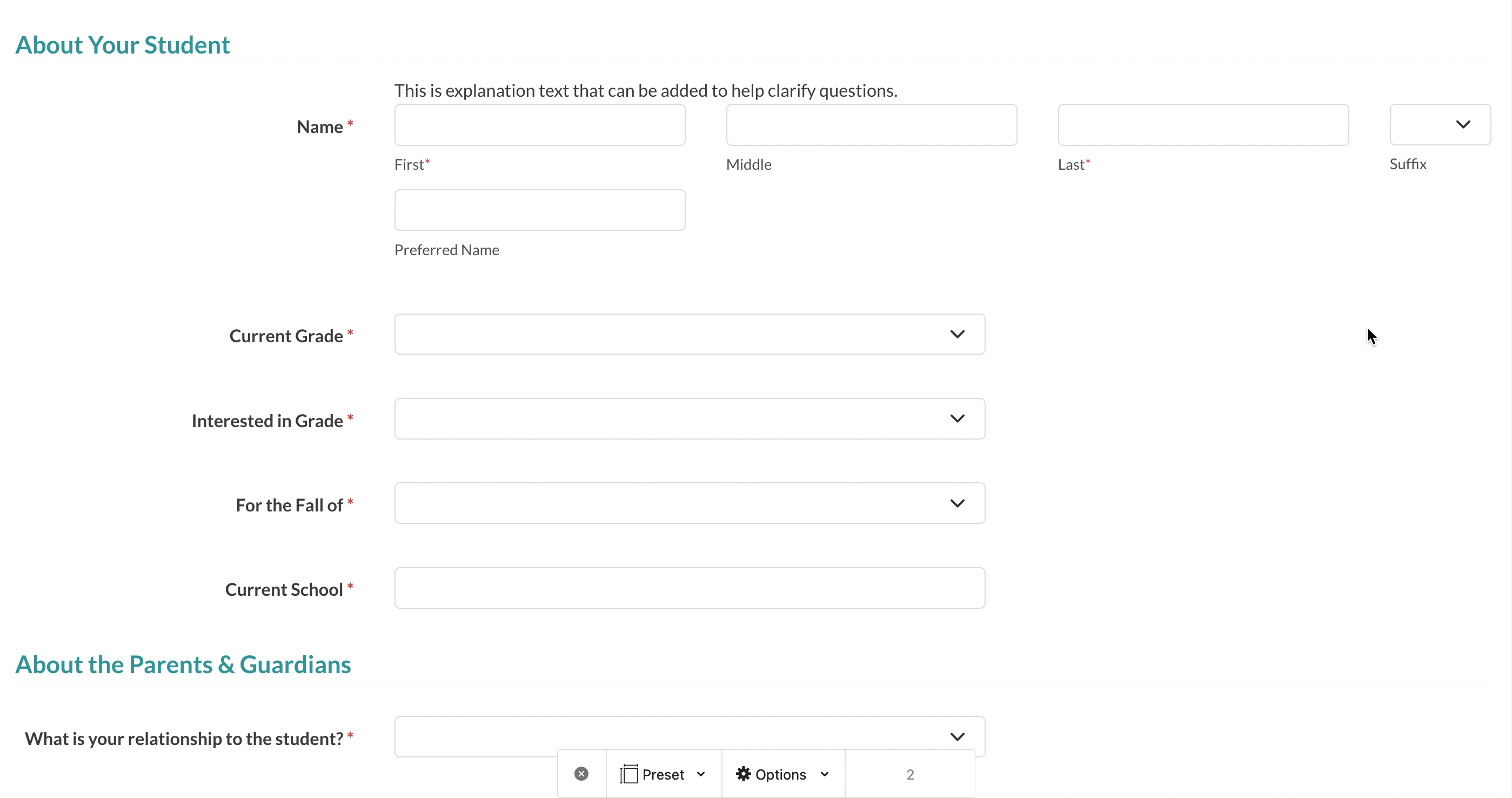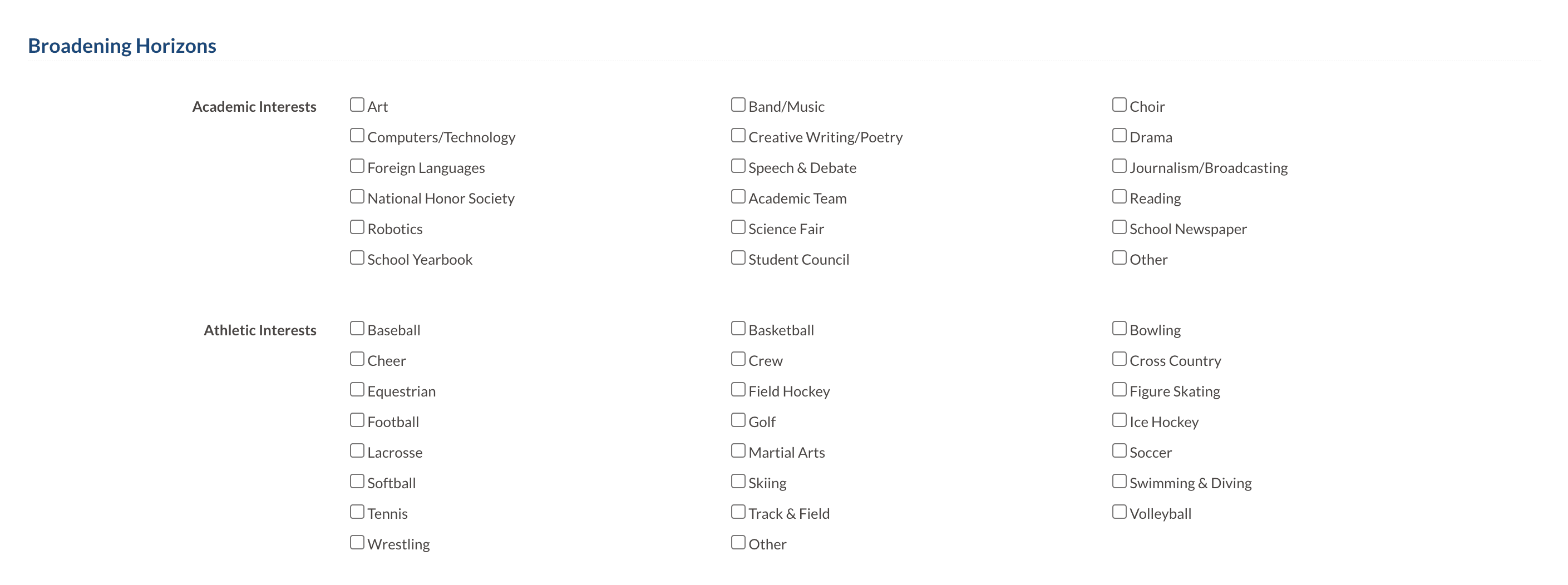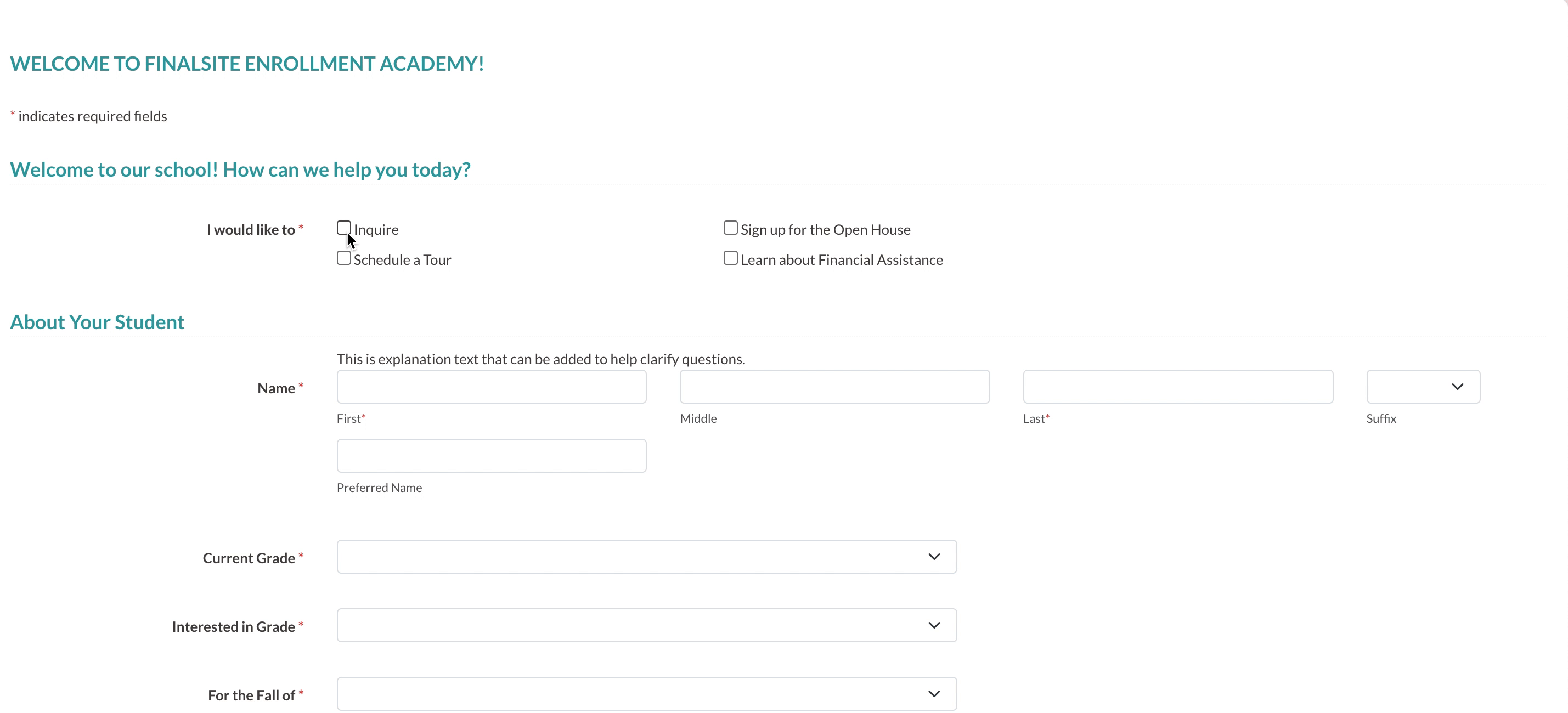Overview
In today's competitive admissions landscape, your inquiry form is often the first impression a prospective family has of your school. It's not just a simple data collection tool; it's a crucial opportunity to engage families, capture essential information, and guide them seamlessly through the admissions funnel.
This article explores best practices for building effective inquiry forms, ensuring your form serves as a welcoming gateway to your school.
In this article
Basic Components of a Good Inquiry Form
Call to Action
Begin your inquiry form with clear and concise calls to action. These should immediately communicate the available options to prospective families, such as "Inquire Now," "Schedule a Tour," or "Learn More About Financial Aid." Prominent placement at the top of the form ensures users can quickly identify their next step and encourages immediate engagement.
Info about the Family
In this section, you'll collect the basic information you need in order to stay connected with the famliy throughout the process. We recommend keeping this section brief and only collecting necessary info from your prospective families. There are, however, certain types of information that is required as part of the form.
What am I required to include in the Inquiry form?
We require some basic information be collected:
-
Student name
-
Apply Grade
-
Apply Term
-
1 Parent name/contact info
-
1 Household address
Apart from what's required some schools also ask for the following info from families in this section:
- Current Grade
- Current School
- Parent Relationship
Interests
Some schools like to collect interests as well. Collecting interests info can be a good way to plan communication from your team.
For example, if a student selects that they are interested in Tennis, you could have:
- An automated reminder set up to internally let the Tennis Coach know that an inquiring student is interested in Tennis.
- An automatic communication sent to the family including more information about your Tennis program.
How did you hear about us?
It's a great idea to close out your form with a 'How did you hear about us?' section. This allows you to gather marketing feedback so that you can better understand which channels drive the most prospective families to you.
How to make your Inquiry Form Really Shine
Make the most of the Call to Action section by including the following
Dynamic Questions
Within your Inquiry, you can implement dynamic questions that appear or disappear based on previous responses. This creates a personalized experience, avoids overwhelming users with irrelevant fields, and streamlines the data collection process.
A good use of this is in your Call to Action section at the top of your form. For example, if a family selects that they would like to ask question, you can open a text box allowing them to enter their queries. Or, if a family expresses interest in touring the school, you can set the form to then reveal the tour sign up component.
Event Sign-Ups
It's a good practice to integrate event sign-ups directly into the inquiry form! This is also something that's a great fit for the Call to Action section at the top of the form.
For example, when a family expresses interest in touring or attending an open house, you can allow them to schedule it right then and there within the Inquiry form by attaching the calendar to the form.
Make the sign up even better
- Make it dynamic by only showing the sign up section for the event if the family selects that option in the Call to Action section of your form.
- Include clear information about what the event entails.
- Keep your Finalsite Enrollment Calendar for the event up to date and if you are no longer hosting a specific event, be sure to remove it from the form!
Resource
If you are looking for information on how to add a calendar to a form, look no further than our Forms DIY: Add a calendar to a form article!
Financial Aid
Including a Financial Aid interest option in your Call to Action section allows you to provide a clear pathway for families to express interest in receiving aid and request more information.
You can use that info internally trigger internal follow-up tasks for your team or automated communication plans to send families more information about the assistance opportunities at your school.
Other Best Practices to Optimize your Inquiry
Minimize Open Text Fields
As a best practice, try not to use open text fields when asking for info on Inquiry forms. Open text answers can make it difficult for you to search for and report on data later on. Let's talk through a simple example to learn how impactful this can be.
Let's say for your "How did you hear about us?" section you provide an open text box to allow families to type in any answer. Six months later, when the marketing team is pulling together feedback on the channels that are bringing families to your school, they find hundreds of differently worded responses making it time consuming and inefficient to parse through the data.
Instead, if you were to set up the "How did you hear about us?" section to be a dropdown with a set options list, the reporting aspect later on will be much easier and more impactful for your school.
That's a very simple example of the why behind this practice but we encourage you to use it to evaluate your current processes. Should any of your existing text fields be converted to dropdowns for better reporting in the future?
Form Length
It's recommended to keep your Inquiry form short and sweet. Keeping your form concise by only asking for essential information will encourage higher completion rates from families. Consider the basics that you must know at this stage to keep connected with the families and only ask for what you really need at this stage.







Comments
0 comments
Article is closed for comments.